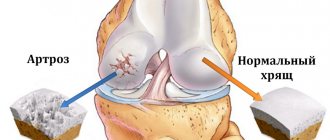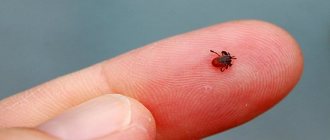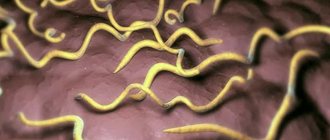Canine influenza: features of the disease
What is canine flu? This is a question that worries many owners of pets. Veterinarians note that influenza in dogs is an infectious disease caused by viruses and occurs quickly. It is caused by a specific strain and is transmitted by airborne droplets.
Questions and Answers What is a DNA test for cats and dogs and why is it needed? The virus that affects dogs, scientists note, is a specific mutation of the virus that affects horses. An outbreak was recorded in 2004 at a Florida racetrack. Then the greyhound dogs died. There was also an outbreak of canine influenza in New York State. And after a series of infectious manifestations, it was identified at racetracks in 10 states. However, there is no evidence that canine influenza can be transmitted to humans. The main thing is that the pet owner should carefully observe safety and personal hygiene measures after contact with a sick animal. Based on research results, it was determined that the virus adapts in the dog’s body through point mutations in genes.
After some time, it turned out that influenza in dogs can also develop due to a mutation in the bird flu strain - for example, one of the deaths was registered in Thailand after a four-legged dog ate an infected duck.
The incubation period for a dog with the flu is 2-5 days, but virus shedding can occur within 7-10 days from the onset of symptoms.
40 injections in the stomach? Myths and truth about rabies Read more
Treatment of kennel cough in dogs
Kennel cough in dogs has no specific treatment. As with the human form of the disease, no drugs have been developed for canine influenza that could have a direct destructive effect directly on the virus. The main role in treatment is played by the animal’s immunity, which is capable of producing a sufficient number of antibodies to the pathogen in at least a week. Therefore, the dog will get the flu in any case and nothing can be done about it except to support its body with the help of conservative treatment.
It is worth noting that most dogs completely survive without any treatment. The influenza virus will go through its development cycle, the immune system will develop protection and the animal will recover. To avoid complications, you need to keep the animal in a warm, dry room without restricting its diet. The dog's appetite will be noticeably reduced, but if possible, it should be encouraged to drink plenty of water.
In some cases, especially under unfavorable housing and feeding conditions, or the presence of other infectious diseases at the time of development of kennel cough, pneumonia may occur in dogs. In these cases, treatment with antibiotics will be necessary. The drugs are given orally, usually for 14 days. Often, practicing veterinarians will prescribe antibiotics in any case to prevent the development of a bacterial infection.
In very severe cases, dogs may require intravenous fluids and more complex medications, but this is extremely rare.
As already noted, kennel cough in dogs is characterized by a favorable outcome in the vast majority of cases of the disease. Death is possible only in 6-8% of cases in the complete absence of treatment, usually after complications with pneumonia. The likelihood of mortality is higher among dogs that have a weak immune system or are in poor physical condition.
Preventing canine flu
There is a relatively new vaccine against canine influenza caused by the H3N8 strain. However, the use of this vaccine is not mandatory in most countries, including Russia.
Vaccination against kennel cough in dogs requires two doses. The first injection is given when the puppy is 2 to 4 weeks old, and the second injection is given 2-3 weeks after the first. Like other vaccines against viral infections, this one is also not able to prevent dogs from becoming infected with influenza, but it can reduce the severity of the clinical disease. Vaccination will also reduce the likelihood of developing pneumonia and shorten the duration of the flu, which means the possibility of infecting other dogs.
Below we will consider the most frequently asked questions from visitors to veterinary clinics related to canine influenza.
The dog is coughing as if he is choking. What could it be?
Coughing in dogs is a characteristic sign of many diseases associated with the respiratory system. This includes both relatively harmless viral infections, such as coronavirus or influenza, and those with an unfavorable prognosis, such as pneumonia or emphysema. It is impossible to make a diagnosis and determine the level of danger to an animal’s life at home. If your dog has been coughing heavily for more than a day and the symptom only gets worse over time, you need to seek professional help as soon as possible.
My dog is coughing, how to treat it?
If a dog often sneezes or coughs, this indicates the development of a pathological process in an area hidden from external inspection - the respiratory system. No matter how trivial it may sound, before prescribing treatment, a diagnosis is needed. Perhaps this is a foreign body in the respiratory tract, or perhaps a severe form of pneumonia. Coughing in dogs is a characteristic symptom of an average of forty diseases, so only a veterinarian can understand this issue. If, in parallel with the cough, other similar flu symptoms are observed, treatment can be omitted, provided that the standards for keeping and feeding the animal are observed.
Can a dog get the flu from a person?
A dog cannot catch the human form of influenza from a person. The disease is caused by different strains of the virus that do not get along in the non-native environment of the body. However, if a person strokes an animal sick with dog flu and then a healthy one, then the virus can be transferred to the skin of the hands.
If you have additional questions regarding kennel cough in dogs, we will be happy to answer them in the comments to this article. Take care of your pets.
How to prevent infection at home?
Unlike human influenza, canine influenza does not spread only during certain seasons of the year. Dogs get sick both in winter and in summer. As the most effective prevention of kennel cough, you should not allow your pet to come into direct contact with unfamiliar animals, and also avoid petting other dogs that have visible symptoms of the disease. In any case, you should always wash your hands with soap.
If the household contains many dogs, then when the first symptoms appear in one of them, the animal must be immediately separated into a separate quarantine room and not allowed to contact other dogs for the entire duration of the illness and for two weeks after recovery. This also applies to items for keeping and household items for a sick animal.
comments powered by HyperComments
Attention! We need your help!
If you liked this article and have a couple of minutes of free time, please go to this page, it is within our website. Thank you very much in advance!
Dog flu: symptoms
What is canine flu? - owners are interested in order to see dangerous signs of illness in their pets in time. As experts note, such pathology in four-legged animals can be either mild or severe. Canine influenza, the symptoms of which are not so difficult to recognize, because they are standard - respiratory, requires careful monitoring of the animal.
Article on the topic
Worms, rabies, bacteria. What can you get infected from a dog? So, when infected with the influenza virus, a dog will exhibit the following signs:
- cough and sneezing;
- redness and increased watery eyes;
- discharge of mucus from the nose, which turns from initially transparent to yellow-green;
- fever with temperature rising to 40 degrees;
- depressed state of the animal;
- increased frequency and difficulty breathing.
If a dog has the flu, it will refuse to eat, lie down and feel weak. It is worth understanding that the disease is dangerous due to its complications - a secondary infection can occur and pneumonia develops.
The task of veterinarians is to distinguish canine influenza from other similar infections: adenovirus, mycoplasmosis and others.
Symptoms and differential diagnosis
Colds in dogs occur after exposure to external pathogenic factors. The history usually includes prolonged exposure to cold air, swimming in ice water, and owners often do not attach importance to maintenance errors. Thus, it is considered normal to keep a dog in a kennel without bedding even in the most severe cold weather. Less often, a cold is preceded by heatstroke - overheating is also one of the pathological factors that reduce resistance.
Signs of a cold animal:
- the nose becomes dry and hot;
- the fur is tousled;
- lethargy, fatigue;
- body temperature is increased;
- mucous nasal discharge;
- cough, sneezing.
When a cold occurs in dogs, rhinitis is usually recorded; the development of bronchitis or pneumonia indicates a more severe course of the pathology and the presence of serious complications. At an early stage, the disease is characterized by moderate nasal discharge. They are slimy or watery in nature. An admixture of pus indicates the presence of bacterial flora.
Dog flu: treatment
There is no specific treatment regimen for canine influenza. A sick dog should be isolated from others; it should be provided with quality feeding and its diet should be enriched with vitamins. It should be in a warm room without drafts. Immunostimulants, such as interferon, may also be prescribed. In addition, veterinarians also offer antiviral treatment. If a secondary infection occurs, antibiotics are offered.
Can a cat infect humans with the flu? More details
Prevention measures
A vaccine for dog flu has not yet been developed. To protect an animal from this disease, it is necessary to strengthen the animal's immune system. A weakened body is most vulnerable to viruses. A lack of exercise and a passive lifestyle lead to a decrease in immunity. The cool season is not a reason to give up walking.
However, you need to make sure that your pet is dressed warmly, this is especially true for dogs with short hair. It is advisable to shorten the walking time and avoid bathing your pet in cold water.
The room in which the dog is kept must be periodically ventilated and wet cleaned. Dry air leads to dry mucous membranes, which cannot resist the virus and create a favorable environment for the development of bacteria. Air humidity can be measured using a special device (hygrometer).
If a dog lives outside in a kennel, it should be windproof and warm. Drafts are very dangerous!
An unbalanced diet, deficiency of vitamins and minerals can also negatively affect the immune system, so in winter and spring special attention should be paid to the dog’s nutrition. Do not neglect vitamin supplements.
And finally, the lack of preventive examinations and vaccinations increases the risk of developing viral diseases. If you suspect canine influenza, you should take your pet to a veterinarian immediately.
Can a dog get a cold or flu?
It's that time of year when a slight runny nose quickly develops into sneezing, and a sore throat turns into an incessant cough. You are willing to do anything to keep your family, including your puppy, healthy. Well, now you're probably wondering, “Can a dog get a cold?” And if you feel unwell, the thought that your dog might catch the flu from a person, such as you, will make you even more nervous. Of course, you love your pet and want it to be healthy, but should you have less contact with your pet and isolate it from you until you get better? This article is about whether your puppy can catch a cold or flu from a person, and what you can do for him to prevent him from getting sick.











